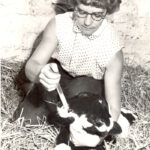“Our young people today will experience the thrills we had so many years ago.”
— Pennsylvania governor and Scranton native Robert P. Casey
 The date: April 26, 1989
The date: April 26, 1989
The place: Lackawanna County Stadium
The situation: Years of dreaming led to decades of planning. Decades of planning led to years of roadblocks. And those years of roadblocks were all cast aside on one evening in late April, 1989, a night Scranton and Wilkes-Barre and Northeast Pennsylvania changed forever on a baseball diamond.
For the first time in 46 years, professional baseball was back in Lackawanna County.
The lead-in: The goal seemed simple enough back in 1977.
Bring professional baseball back here.
After all, it had a long tradition here, dating back to the Scranton Indians’ foray into the Pennsylvania State League in 1886. They’d become the Coal Heavers a few years later, and the Red Sox for a few years to honor their affiliation with Boston. But mostly, they were the Scranton Miners. They had years worth of success, success that was matched for a long swath of time by the Wilkes-Barre Barons, the cross-region rivals who won six league championships between 1909 and 1932.
Didn’t turn out to be easy, though.
Scranton attorney John McGee, the visionary who led the charge to get baseball back, starting Northeast Baseball, the organization that spearheaded the process, serving as a combination of project lobbyist, fund raiser and public relations manager.
In 1984, McGee had some decisions to make. Pressed with the command from Lackawannna County officials to show there was local interest in obtaining a franchise, Northeast Baseball began selling season tickets. To watch a team that didn’t exist, in a stadium that was merely, at that point, a pipe dream.
They sold more than 2,200 by the deadline in early 1985. Northeast Baseball had its government backing for the stadium. Next, they needed their franchise.

Lackawanna County Stadium, during its construction in 1988. TIMES SHAMROCK PHOTO
McGee and Northeast Baseball turned the season-ticket money into a franchise, purchasing the Eastern League’s Double-A Waterbury Indians. The plan, at least on paper, was complete: By the spring of 1987, baseball fans in Scranton, Wilkes-Barre and around the region would be enjoying Double-A baseball on Montage Mountain.
Only, McGee had bigger ideas.
His ultimate goal wasn’t to build a $22 million, state-of-the-art stadium to bring in a Double-A franchise.
“The original goal was to bring Triple-A baseball to Northeastern Pennsylvania,” the Red Barons’ first general manager, Bill Terlecky, recalled. “But we wanted to get the project going. The only thing we could purchase at the time was the Double-A team in the Eastern League. We got people talking. But we also had the escalating costs over time. Everybody was wondering, ‘Can we do this?’”
Terlecky and assistant general manager Rick Muntean, two boyhood friends from Ohio who both wanted to run baseball teams, were brought in to get this one off the ground, and they’d be central figures in what would be a crazy series of events that got the Red Barons to the mountain.
 Shortly after purchasing the Waterbury franchise, McGee negotiated a deal with Jordan Kobritz, the owner of the Maine Guides, the Indians’ Triple-A franchise that played in Old Orchard Beach — a popular summer destination in Maine — in The Ball Park, a 6,000-seat stadium built in 1984 after Kobritz moved the Charleston Charlies from Charleston, W.V. Basically, Kobritz would sell the Triple-A franchise to Northeast Baseball in exchange for the Double-A franchise and a cool $1 million.
Shortly after purchasing the Waterbury franchise, McGee negotiated a deal with Jordan Kobritz, the owner of the Maine Guides, the Indians’ Triple-A franchise that played in Old Orchard Beach — a popular summer destination in Maine — in The Ball Park, a 6,000-seat stadium built in 1984 after Kobritz moved the Charleston Charlies from Charleston, W.V. Basically, Kobritz would sell the Triple-A franchise to Northeast Baseball in exchange for the Double-A franchise and a cool $1 million.
If the Eastern League didn’t accept Maine into the fold, Northeast Baseball would have to kick another $1 million into the pot to land the Triple-A franchise.
Seemed pretty cut-and-dried on paper. It would turn out to be anything but.

JOHN MCGEE was the driving force behind baseball’s return to the region. TIMES SHAMROCK PHOTO
In January of 1987, with construction on the ballpark struggling along — ground was broken just five months earlier — Kobritz showed the first signs that the deal was on shaky ground. After the Eastern League refused admittance to Old Orchard Beach, Kobritz sued to maintain ownership of the franchise, insisting the deal should be nixed since it no longer included the promise of the Double-A franchise.
With the stadium being built and the Triple-A franchise in flux, Northeast Baseball had to find a home for its Double-A franchise. It was sent to Williamsport, where the Williamsport Bills played the 1987 season at historic, and lightless, Bowman Field. Terlecky and Muntean ran the operation.
For a year, that was the state of professional baseball in Scranton/Wilkes-Barre. Appeals and posturing on the legal side. A stadium going up slowly — and at a much higher cost than the $13 million originally estimated. A Double-A team waiting to land at its ultimate destination, wherever that might be.
Clarity didn’t come until January of 1988, when an appeals court ruled Kobritz had to honor the original contract, meaning the Triple-A franchise legally belonged to Northeast Baseball. It was official: In 1989, once work on the stadium was complete, the Scranton/Wilkes-Barre Red Barons would take the field for the first time.
“The multi-purpose stadium and the team constitute the biggest development here in 50 years,” “Over the course of the 1980s, the Scranton/Wilkes-Barre (and) Northeast Pennsylvania area’s biggest problem have been that of image.”
That was about to change, and the area would never be the same again.
The moment: “I remember the first words I spoke,” said John Davies, Lackawanna County Stadium’s longtime public address announcer, falling into the same excited bellow that became his trademark for more than 20 years. “’Good evening, ladies and gentlemen, and welcome to the beautiful Lackawanna County Multi-Purpose Stadium. For the first time in 36 years, baseball is back in Northeastern Pennsylvania.’
“And then, I heard the roar.”
It’s a roar that has quieted over the years. It’s a roar that has run louder, too. It’s one that has come and gone, and mostly stayed, for the last 30 years.
Funny thing is, few who were there remember much about the game. Most left their seats and headed for home by the seventh inning, with a chilly rain falling and the Red Barons trailing by eight. Keith Miller hit the first home run for the Red Barons in the stadium’s history that night. But, it’s pretty much all that went right on the field.
Before the first pitch, though, government officials, Phillies brass and fans partied like they never had before.
Phillies owner Bill Giles was on hand, touting the ballpark as “the best in minor league baseball.” Then-Scranton mayor David Wenzel saw plenty of hope not just for the future of area baseball, but the future of area development, essentially admitting that the Red Barons and Lackawanna County Stadium give out-of-towners a reason to come to Scranton not just to visit, but to enjoy themselves while they do.
“They don’t realize that there’s more to Scranton than old, abandoned coal dumps and just an old city,” Wenzel said.
There were plenty of reasons to celebrate that night, indeed.
For starters, the fact that the stadium wound up being completed on time to open the season on schedule in itself proved to be a bit of a miracle.
An unusually mild winter paved the way for few delays as constriction hit the homestretch, but as he walked around the field just a few hours before scheduled first pitch, Muntean noticed workers around the stadium putting final coats of paint where it was needed. In the training room in the Red Barons’ home clubhouse, trainer Barney Nugent learned that electrical outlets had not yet been installed. A few nights before the game, the Red Barons’ first shipment of bats were sent to a Little League field in Rochester. The stadium’s music director had to learn how to use the equipment on the fly. Ushers and other stadium workers showed up for their first-ever shifts not knowing even the most basic protocols about their jobs because, in their defense, there hadn’t even been a stadium in which to train them. Muntean said, with a laugh, he even saw an usher drinking a beer before the game.
“None of our employees knew what the heck they were doing,” Muntean said.
But he also remembered the happiest parties he has ever seen on the suite level, with fans going from box to box, meeting new friends, cheering on a new team, almost in disbelief at what they were seeing. He remembered overflow lines at the concession stand. He remembers the tiny team store near Lackawanna County Stadium’s entrance, practically bursting at the seams as fans packed in to purchase anything they could grab with a Red Barons logo on it.
In a long pregame celebration, McGee’s then-10-year-old-son, Jim, threw the ceremonial first pitch, with his dad in the batter’s box, commissioner Ray Alberigi catching, and commissioner Joe Corcoran umpiring. The pitch was a called strike.
Also on hand, then-Gov. Robert P. Casey, the Scranton native who provided state funding to see the stadium project to the finish line, where it came in at $22 million. They watched an elaborate pregame show, where balloons were released into the sky to celebrate a new birth in Northeast Pennsylvania.
“The place was just crawling with people, and they didn’t care whether we won or lost,” Davies said. “They were just so happy to have baseball back.
“For so long after the Scranton Red Sox and Wilkes-Barre Barons left, all we had was legion baseball and the old Scranton Association and the Scranton Red Sox in the ECBL. So that night was a tremendous night. I was 35 going on 11.”
HISTORY BEHIND THE MOMENT
 The first home opener was easily the latest in franchise history, starting nine days later than the 2009 opener against Rochester. The Red Barons played the first 20 games that season on the road, giving workers a bit of a cushion to put the finishing touches on the stadium.
The first home opener was easily the latest in franchise history, starting nine days later than the 2009 opener against Rochester. The Red Barons played the first 20 games that season on the road, giving workers a bit of a cushion to put the finishing touches on the stadium.
The Red Barons lost the game, 9-2. It remains the second-worst beating the team has taken in a home opener, and it led to one of the big stories surrounding the franchise in the early-going. With fans leaving early, traffic piled up after the game, an issue that dogged the team and fans for several months. There was just one lane out of Lackawanna County Stadium at the time — an access road that linked Route 502 to Moosic and alleviated many traffic issues hadn’t been opened yet — and fans leaving the stadium had to wait in traffic for an hour or more trying to get out of the ballpark.
From 1989 through 2003, Terlecky and Muntean ran the show, leading the franchise through its infancy and into its glory years as the Red Barons. But perhaps the craziest moment they experienced was one they experienced that year they ran the Williamsport Bills in 1987.
Dave Bresnahan, a light-hitting catcher, was ejected from a late-season game and ultimately banished from the Eastern League for pretending a potato was a baseball during a game.
Bresnahan’s incident has made him a cult hero around the minors.
[youtube https://www.youtube.com/watch?v=hKecA6QPBvg]

Donnie Collins has been a member of The Times-Tribune sports staff for nearly 20 years and has been the Penn State football beat writer for Times-Shamrock Newspapers since 2004. The Penn State Football Blog covers Nittany Lions, Big Ten and big-time college football news from Beaver Stadium to the practice field, the bowl game to National Letter of Intent Signing Day. Contact: dcollins@timesshamrock.com; 570-348-9100 x5368; @DonnieCollinsTT



